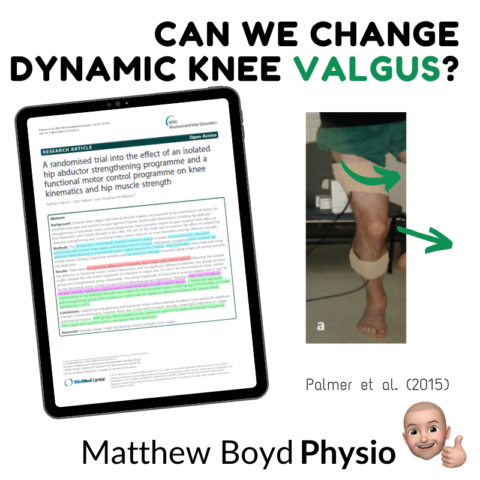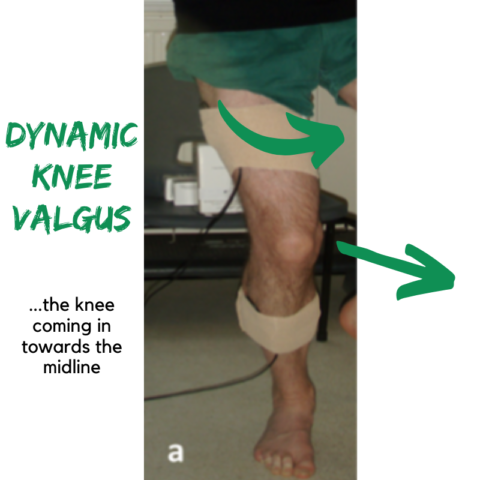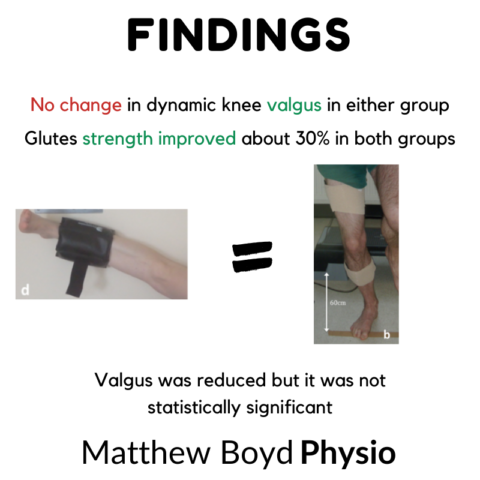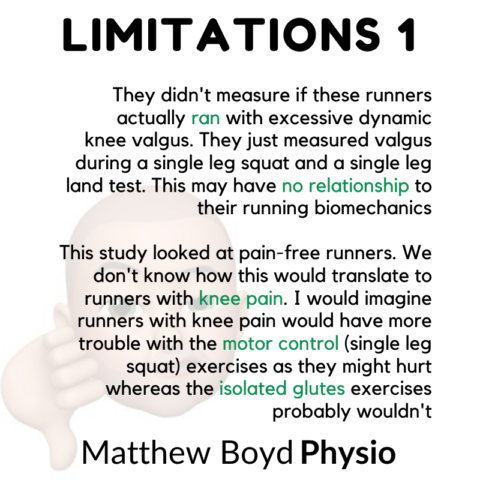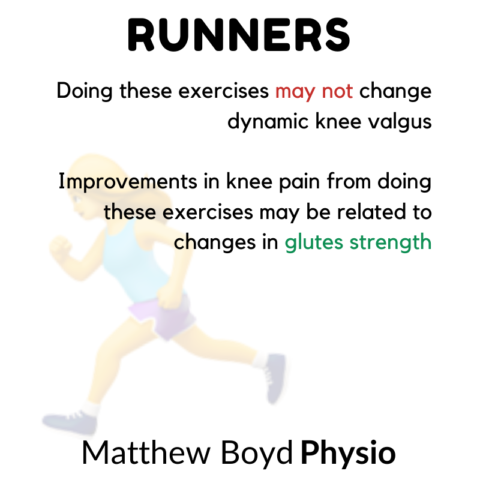What is “dynamic knee valgus” anyway?
Dynamic knee valgus is a term we use to describe the knee coming in towards the midline. If you take a slow motion video of someone running towards you they will land on one leg, bend their knee and then jump onto the other leg. In this way, runners are doing a series of “single leg mini-squats”. A common test that Physios use (me included) is to get you to stand on one leg and do a single leg squat. If your knee moves inward toward your midline as you do this we call it dynamic knee valgus. When I see people doing this when they run I often call it “knock knee” running as dynamic knee valgus is a bit confusing.
Whether this “single leg squat” test actually tells us anything about how you run is a question for another day! Today, we’re going to presume it does. This dynamic knee valgus movement has been related to runners knee (patellofemoral pain). We’re also going to presume it’s a “bad movement” … whether it is actually a “bad movement” is another question for another day!
Today’s research paper reviewed whether exercises can train this movement pattern out of you.
Study
- 29 runners who demonstrated a dynamic knee valgus pattern during a single leg squat and single leg landing from a drop
- (Picture of valgus)
- Divided into 2 groups
- Isolated hip abductor strengthening
- Functional motor control exercises
- (Picture of exercises)
- Trained for 5 weeks then measured
- Knee kinematics (valgus) during a single leg squat and single leg landing from a drop
- Hip abductor (glutes) strength
Findings
- No change in dynamic knee valgus in either group (it was reduced but it was not statistically significant)
- Gluteal strength improved about 30% in both groups
Limitations
- They didn’t measure if these runners actually ran with excessive valgus. They just measured valgus during a single leg squat and a single leg land test. This may have no relationship to their running biomechanics.
- This study looked at pain-free runners. We don’t know how this would translate to runners with knee pain. I would imagine runners with knee pain would have more trouble with the ‘motor control’ (single leg squat) exercises as they might hurt whereas the isolated hip exercises probably wouldn’t.
- They measured kinematics (angles we can see) but not kinetics (forces experienced by joints). There may be changes in kinetics that this study can’t shed light on.
Clinicians
- These exercises don’t seem to reduce knee valgus
- These exercises may help runners with knee pain, but it may not be due to a change in knee valgus
- The single leg squat and isolated hip strengthening exercises both improved glut strength equally well
Runners
- Doing these exercises may not change dynamic knee valgus
- Improvements in knee pain from doing these exercises may be related to changes in glut strength
Reference
